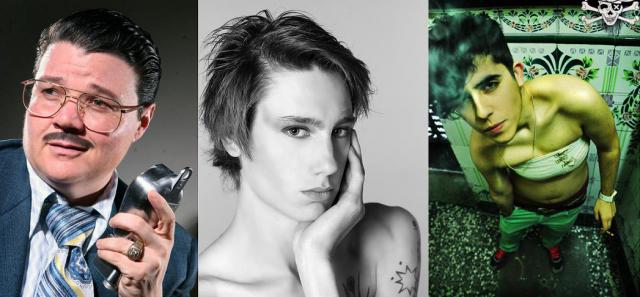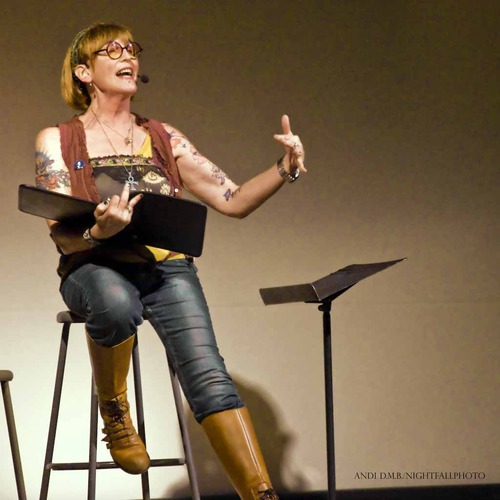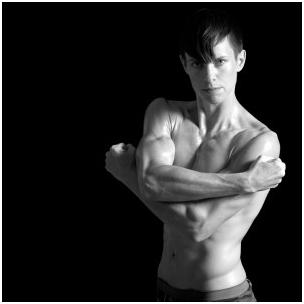Serendip is an independent site partnering with faculty at multiple colleges and universities around the world. Happy exploring!
stepping outside


Alice in Wonderland, through parody, suggests the constant fluctuation of identity, and the precariousness of our systems of language to describe it. Andy Clark claims that our selves are composed of the tools and methods we use to understand and function in the world. As Anne pointed out, our tools and processes can only be judged "faulty" by mutually agreed-upon standards that are as precarious as the word meanings Alice plays with. Culture as Disability highlights this as well-- even, for example, the importance of the ability to speak and eat as "ordinary" humans do (which makes the "correction" of a cleft lip or palate so ordinary) is based on a culture that prioritizes these abilities. These norms, like the meanings of words, shift over time response to pressures from within and without the system they create.
Bernice L. Hausman, in her book Changing Sex, explores the relationship between plastic surgery and changing standards of appearance. Plastic surgery is a more recent development in a long history of body-modification technology; although it produces more drastic changes than, for example, shaving body hair or applying lipstick, surgery aims for the same goal: the alteration of a person's appearance to correct a perceived flaw, or "externalize" that person's internal self-image on their body. Hausman cites examples of plastic surgeons claiming to give people chances at better lives by giving them faces and bodies that better fit the expectations of society. Surgeons, according to Hausman, claim no responsibility for societal beauty standards: "we cannot change society, but we can change the individual to make him conform more closely to society's ideal."

Surgery to repair a cleft lip, left, and to create a double eyelid.
But, as Hausman notes, the availability of technology with which to change one's appearance has great impact on the constantly shifting standards of beauty in a society. Performing a cosmetic surgery reinforces the standards that claim that the post-surgery result is a better way to look or be. In time, Hausman claims, the widespread availability of this technology changes the "norm," which is conflated with the "ideal," shifting it towards an appearance that, for many, requires body modification to achieve.
The possibility of surgical alteration of one's genitals, then, is relatively new, and is constrained by the limits of existing technology to "construct physiological normality" (Hausman 66). Many have reacted with dismay to this "new" possibility of "constructed" men and women (although the lines of gender were blurred in other ways before this technology arose, and Clark's thinking suggests that no person, man, woman or otherwise, is unconstructed): in her The Transexual Empire, for example, Janice G. Raymond states that "all [male-to-female] transsexuals rape women's bodies by reducing the real female form to an artifact" (qtd. Bornstein 75). Similarly, Mary Daly declared in Gyn/Ecology that "transsexualism...invades the female world with substitutes." Hausman sees in this outlook a "nostalgia for the 'natural' female body," which seems to idealize the body untouched by any of the modification processes that are usually pressed onto women. Just as theorists like Raymond and Daly reject the idea that a "real woman" must be constructed with razors, heels, and perhaps even plastic surgery, they reject the idea that a woman can be constructed at all, preferring solidarity based in the "natural body."
By Clark's logic, however, there is no person who is not constructed out of their choice of tools. Not shaving one's legs or getting breast implants is as much an act of self-construction as choosing to shave them or get surgery is (assuming equal access to things like plastic surgery, which is of course not the case).* In a world with clothing, life-saving medicines, haircuts and exercise regimes, there is no "natural," no default option that makes no statement. And, of course, a feminist who avoids shaving her body hair or otherwise modifying her body in the ways she is told to is hardly trying to avoid making a statement. However, in Daly's and Raymond's case, it is a statement that draws a line between body modification that is "natural" and that which is not-- a line which deserves to be examined further.

"I was a freak all right, but I was only a freak to the degree that I remained silent." --Kate Bornstein
In her performance piece "My Words to Victor Frankenstein Above the Village of Chamounix -- Performing Transgender Rage," Susan Stryker lays claim to her "unnatural body," finding "a deep affinity" with the monsters to whom she is compared, both in terms of her body's constructedness and her exclusion from "normal," "natural" human society. Likewise, Kate Bornstein calls all those marginalized by or suffering from their "failure" to achieve societal acceptance as "real" or "natural" to embrace their outsiderness, to "free ourselves from any system that would oppress us, even the ones that most people believe are 'natural'" (HCW 44).
Normal 0 false false false EN-US X-NONE X-NONE MicrosoftInternetExplorer4
“To be queer is to be on the outside and to be on the outside is to be a force of resistance. I think of my body as that, and I think of it as armature — I don’t want to belong in that really particular way.” --Heather Cassils
Heather Cassils, a queer performance artist in Los Angeles who constructs her body not with hormones or surgery but through exercise as a bodybuilder, finds in her body's constructedness a source of power. By acknowledging and claiming the constructedness of one's identity, she suggests, one can step outside of the normative conversation about identity and therefore influence it. By challenging the categorization of certain forms of beauty as "natural" or "normal," she suggests, one can do to self-construction what Carroll does to language in Alice in Wonderland.
* I have left out a great deal in this paper by assuming that any given individual has the agency and the means to choose to modify their body in any of the above-mentioned ways. Choice of body modification is hardly the only way to step outside of limiting spheres of thought, as Bornstein thoroughly explains in Hello Cruel World, and it is not available to many people, for economic as well as societal reasons.




Comments
Re-sculpting ourselves, and culture?
What's most impressive, first, here, jrf, is the way in which you've used the sequence of papers you've written for this course to explore a single line of thought, about the revisability of self. Here you focus that large philosophical question on the matter of surgical transformation of the body, particularly that of the transexual body, and your work is most impressive (again) in the wealth of citation and research that it brings into the fold.
I do think that the link between disability studies and transgender studies might continue to prove both a provocative and a generative one; after Liz Reis's talk on campus, a few weeks ago, about "The Body in Doubt: The American History of Intersex," I found myself first in conversation with a disability studies scholar, who thought the debate of parents of deaf children about the use of cochlear implants (an intervention that would have the effect of placing the child outside of Deaf Culture) was strikingly similar to the dilemma facing parents of intersex children, wondering if the decision about sexual (and its concomitant gender) identity might be delayed until the children are old enough to decide for themselves. I then found myself talking with someone who is intersex, whose first sense of herself as "whole" came only when she found herself staring, in adulthood, @ someone else who was wheelchair bound. So all these questions about identity--its policing and its revisability, its enabling and its disabling qualities--seem to me quite linked on the meta-level.
So whereto do you want to head from here? Has this strand of thinking played out? This particular essay seems to me to stop, actually, in media res, rather than to conclude....You are in the midst, as you close, of telling Heather Cassils' story, but/and/so...what? What are its implications for the construction of (say) your identity? Or for identity as conceived @ a woman's college? Or ... where else? Who else? Might we imagine a world in which the sort of re-sculpting that Heather Cassils engages in would NOT place her on the outside? Can we imagine a world in which no one is "outside"? A world that disables no one? Are cultural disabilities inevitable?